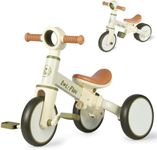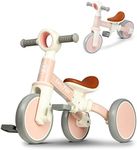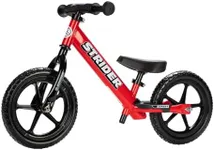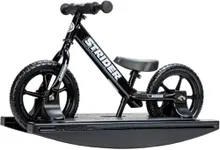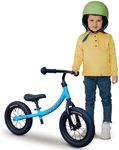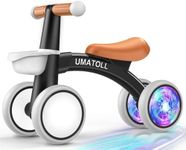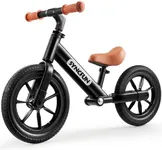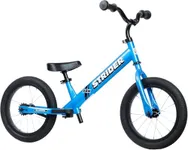Buying Guide for the Best Balance Bike
Choosing a balance bike for a child is an exciting step towards helping them learn how to ride. Balance bikes are designed to teach kids balance and coordination before they transition to pedal bikes. The right balance bike should be comfortable, safe, and suitable for your child's age, height, and skill level. When shopping, focus on features that will make the learning process enjoyable and safe, and always consider how the bike will fit your child now and as they grow.Wheel SizeWheel size refers to the diameter of the bike's wheels, usually measured in inches. This is important because it affects how well the bike fits your child and how easy it is for them to control. Common sizes are 10, 12, and 14 inches. Smaller wheels are lighter and easier for younger or smaller children to handle, while larger wheels can roll more smoothly and are better for older or taller kids. To pick the right size, match the wheel size to your child's inseam and height, ensuring they can sit on the seat with both feet flat on the ground.
Frame MaterialThe frame material determines the bike's weight, durability, and sometimes its price. Balance bikes are typically made from metal (steel or aluminum), wood, or sometimes composite materials. Metal frames are sturdy and long-lasting, with aluminum being lighter and rust-resistant, while steel is heavier but very durable. Wooden frames are eco-friendly and have a classic look, but may not be as adjustable or weather-resistant. Choose a material that matches your priorities: lightweight for easy handling, durability for rough use, or aesthetics for style.
Adjustable Seat and HandlebarsAdjustability means you can change the height of the seat and sometimes the handlebars as your child grows. This is important because it allows the bike to fit your child for a longer period, making it more comfortable and safer to ride. Some bikes offer a wide range of adjustment, while others are more limited. Look for a bike that can be easily adjusted without special tools, and make sure the lowest seat height allows your child to touch the ground with their feet.
WeightThe weight of the balance bike affects how easy it is for your child to maneuver and carry. A lighter bike is easier for younger children to control and less tiring to use, while a heavier bike may be more stable but harder to handle. As a general rule, the bike should not weigh more than about 30% of your child's body weight. Consider your child's strength and confidence when choosing the right weight.
TiresBalance bikes come with either air-filled (pneumatic) tires or solid (foam or plastic) tires. Air-filled tires provide better cushioning and grip, making them ideal for outdoor use on uneven surfaces, but they can get punctures. Solid tires are maintenance-free and lighter, but may not absorb bumps as well. If your child will mostly ride on smooth indoor surfaces, solid tires are fine. For outdoor adventures, air-filled tires offer a smoother ride.
BrakesSome balance bikes come with hand brakes, while others rely on children stopping with their feet. Brakes can help older or more confident children learn to control their speed and prepare for pedal bikes, but they may be unnecessary for very young beginners. If your child is older or will be riding on slopes, a hand brake can be a useful feature. For younger kids just starting out, it's okay to skip this feature.
